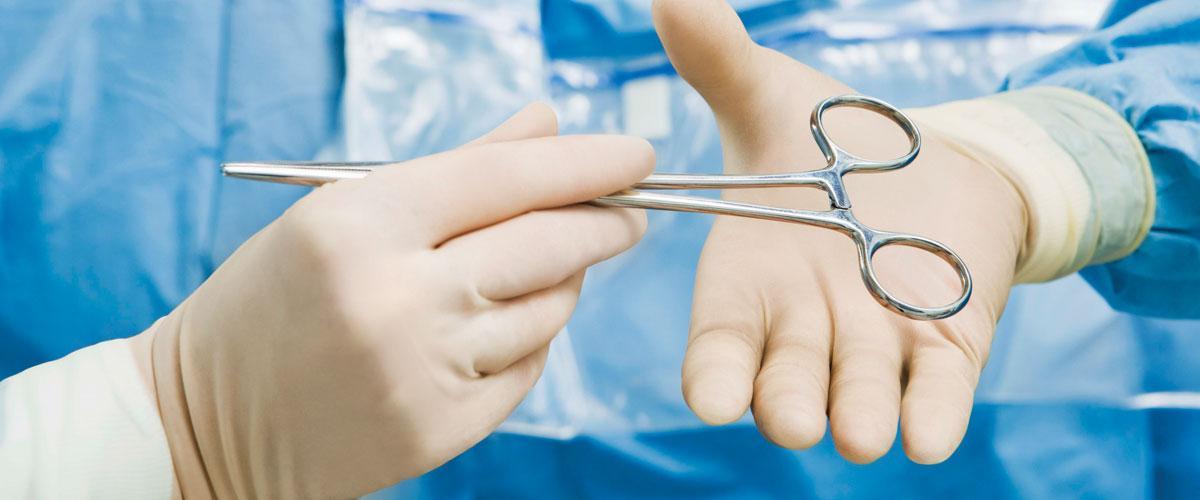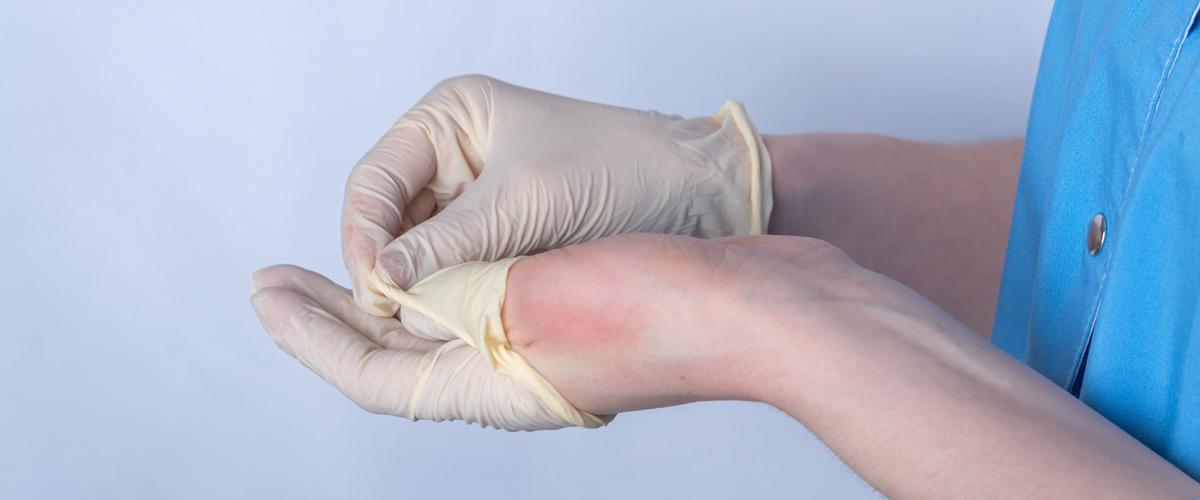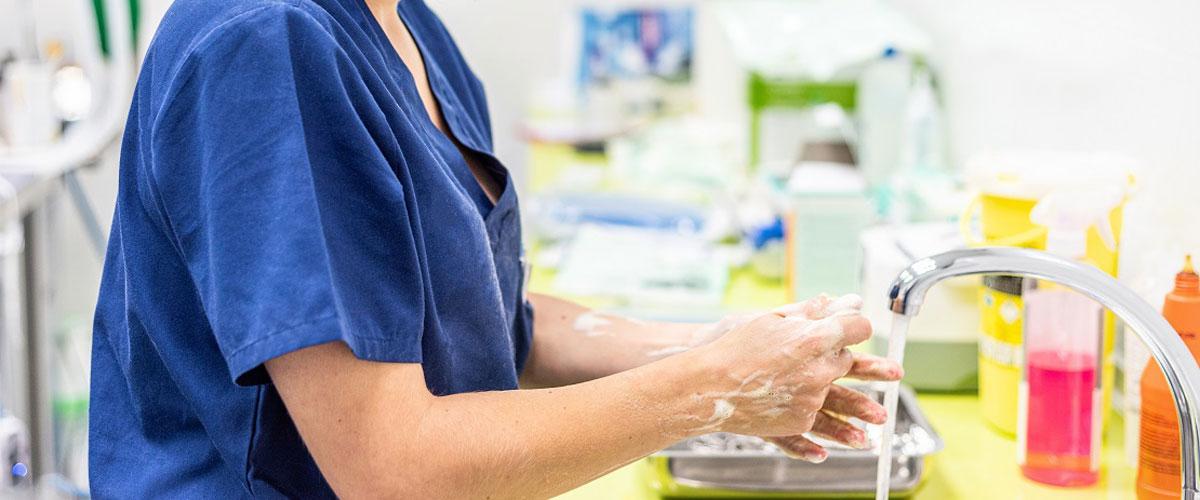Latex is arguably the best material to make surgical gloves from. It has all the properties we look for in a surgical glove: it is strong, flexible, comfortable and has great elasticity. It is also very affordable compared to synthetic materials. What’s the problem then? Latex proteins can cause Type I allergies, which can be very severe.
What are common forms of skin reaction to latex gloves, and what are the health risks associated with latex?
Unlike Type IV allergies to chemical accelerators and other substances, which just cause a localised skin reaction like allergic contact dermatitis, Type I allergies to latex can cause an immediate and potentially life-threatening allergic reaction (anaphylaxis). Symptoms of Type I allergies include skin reactions like welts, rashes, itching and swelling. But Type I allergic reactions can also cause watery or itchy eyes, runny nose, sneezing, wheezing, breathing problems, chest tightness, swelling of the throat/tongue or even death.
Prevalence of and how to prevent latex allergies
You may already be aware of the risks associated with latex, but you might not know just how common they are for healthcare workers:
- Allergies and skin conditions – Increased exposure to latex increases the risk of allergies and skin conditions. Only 1 to 6% of the general population is allergic to latex, but 18% of healthcare workers are! This is because of frequent exposure to latex proteins. So many nurses, doctors and other healthcare workers may begin their career without any allergies, but as the weeks, months and years go by, they become sensitive to latex. You can contribute to preventing latex allergies by simply not using latex!
- Lack of knowledge – Another big risk associated with latex is not everyone knows they are allergic to it. So you could have a patient, for example, that is not aware they are allergic to latex, and they don’t find out until they are exposed during surgery. This, of course, is a dangerous situation, and the only way to avoid it is to make sure that patients are not exposed to latex when in the hospital.
Education and gloves best practices
In a perfect world, we would not use latex during surgeries anymore. In addition to lowering risks, this would give people one less thing to worry about when going into surgery (which can already be a stressful time for patients and their families). However, the best thing we can do is educate ourselves on these risks, and avoid using latex to protect those who are already allergic and help prevent others from becoming allergic to latex. Together we should move towards a world where hospitals are latex-free.
There is plenty of educational materials and information available online for gloves best practices, from academic journal articles to government sponsored campaigns. For example, you can read a latex allergy guideline from the NHS in the UK here.
A non-latex surgical glove solution: Isolex
To help move healthcare facilities away from latex, Medline offers a full range of synthetic latex-free gloves. These neoprene surgical gloves and polyisoprene surgical gloves help eliminate the risk of latex for yourself and your patients. Isolex is Medline’s proprietary formulation of polyisoprene, a raw material used to manufacture non-latex surgical gloves. With a molecular structure virtually identical to natural rubber latex, polyisoprene is the perfect alternative to latex. Users benefit from a soft and comfortable fit and feel, great tactile sensitivity and excellent durability and strength, all without the risks associated with latex.
So what makes Medline’s proprietary polyisoprene so special? Isolex sets itself apart from the competition because it is designed primarily for use as a surgical glove material. While competitors also sell polyisoprene surgical gloves, they purchase their polyisoprene from third parties, who manufacture it for use across many industries. Because of this, other types of polyisoprene surgical gloves contain diphenyl guanidine (DPG), a chemical accelerator that many people are sensitive to. This accelerator can cause Type IV allergic reactions like allergic contact dermatitis. Isolex non-latex surgical gloves, however, are DPG-free.
As you can see in this table, Isolex gloves give you all the advantages of latex without the risks of allergies.
Features and Benefits of Medline’s Latex-Free Synthetic Isolex Gloves
Features
Benefits
100% control of the manufacturing process by Medline
Consistent products with high quality
Latex-free
Eliminates Type I allergies
Molecular structure virtually identical to NRL (natural rubber latex)
Improved performance and comfort
DPG free + HPLC test for chemical accelerators
Reduces the risk of developing Type IV allergies; DPG is a chemical accelerator needed in many PI gloves but we do not use it in Isolex
Tested with 25 chemo drugs + 25 chemicals
Better protection and safety; can be used in various departments outside of the operating theatre, like the hospital pharmacy
4 different alternatives (PI, PI Micro, PI Green and PI Ortho)
Different alternatives for different procedures to meet your needs
Medline proprietary formulation
Premium products and exclusivity
For more information, visit our online catalogue and explore our gloves and their protective properties.


Joe Moriarty
Associate Product Manager Exam & Surgical Gloves, Medline Europe
Joe, originally from the Chicago area in Illinois, has a Bachelor of Arts from the University of Iowa, and has been living and working in the Netherlands for almost 5 years. He started out in Medline’s Flex Pool programme at the US-based headquarters, and later transitioned to working in the gloves division in Europe.








